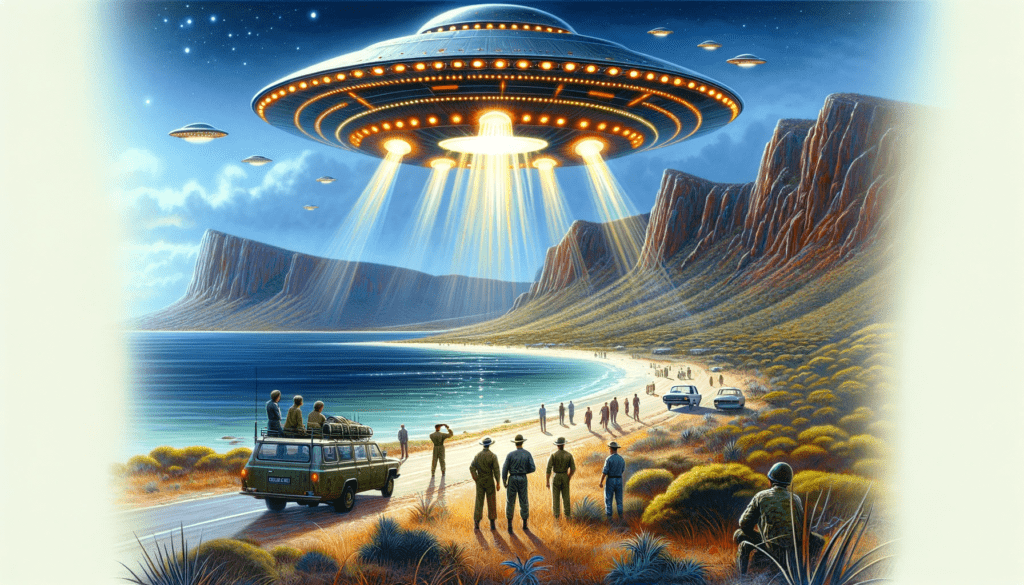North West Cape Incident (1991)

North West Cape, a rugged coastal peninsula in Western Australia, has long been a place of mystery and allure. Amidst its sandy beaches and scrubby brushland lies an indigenous culture, colonial history, and military significance. In 1991, this remote region became the focal point for one of Australia’s most captivating UFO encounters, an event that would fuel speculation, intrigue, and investigation for decades to come.
The incident occurred in late April, when Erin Ryder, a civilian employee, was departing from the U.S. Naval Communication Station located on the Cape. This station, known for its Very Low Frequency (VLF) transmission capabilities essential for submarine communications, already bore strategic importance. As Ryder drove away from the base during the evening, her journey took an unexpected turn. She reportedly saw an astonishing sight: an unidentified craft hovering silently above the road. The UFO, described as having brilliant lights, defied conventional explanations, neither resembling known aircraft nor exhibiting typical flight behavior.
She wasn’t the only one to witness this puzzling phenomenon. Several other military and civilian personnel stationed in the area came forward with similar accounts, their testimonies showcasing the object’s vast size and unconventional aerodynamics. Notably, Lieutenant Colonel John Wiesman, a U.S. Marine Corps officer, validated these claims, describing the object as “bigger than a 747” and shaped “like a Triangle.” Another officer claimed that local radar systems had detected the anomalous object, but official records were either non-existent or not publicly disclosed.
The North West Cape incident didn’t just stop at visual accounts. There were subsequent reports of electronic interference during the event. Some speculated that the craft’s presence had disrupted the powerful VLF transmissions, potentially compromising submarine communications. Though evidence for this interference is anecdotal, it adds another layer to the enigma.
Several researchers have looked into this captivating occurrence, hoping to unravel its secrets. Bill Chalker, a respected Australian UFO investigator, compiled an extensive report, speaking directly to some of the witnesses. His book, “The Oz Files: The Australian UFO Story,” dedicates a section to the North West Cape encounter, analyzing the testimonies and weighing them against other prominent Australian UFO sightings. Chalker’s work emphasizes the credibility of the witnesses, particularly given their military backgrounds and the potential professional risks they faced by coming forward.
Another noteworthy exploration is Keith Basterfield’s “UFOs: A Report on Australian Encounters.” Basterfield, known for his meticulous and rigorous approach, lookss deep into the North West Cape incident, suggesting that the sighting might be connected to other simultaneous UFO reports from the Australian continent. He subtly hints at the potential interest of extraterrestrial intelligence in Earth’s military and communication facilities.
Witnesses, including Erin Ryder and Lieutenant Colonel Wiesman, stood by their accounts despite the skepticism they faced. Their descriptions, consistent with each other but divergent from known aircraft characteristics, lend weight to the belief that what transpired that April evening was out of the ordinary.
The North West Cape incident of 1991 is one of Australia’s most compelling UFO encounters. Its unique blend of credible eyewitnesses, strategic military setting, and the backdrop of the enigmatic Australian wilderness ensures its place in UFO lore.


